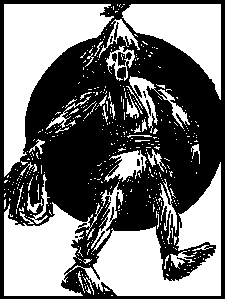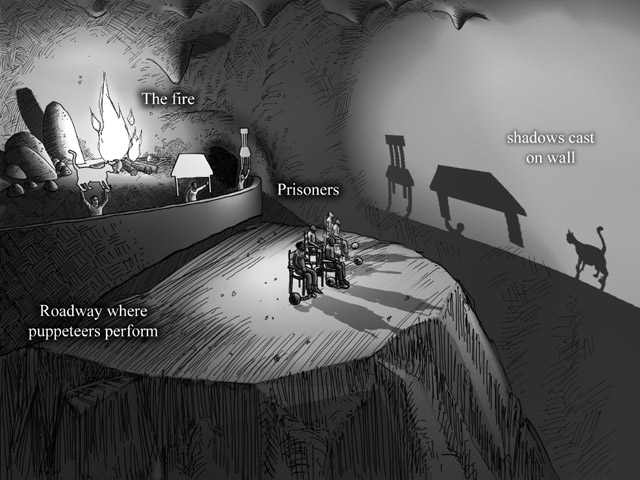By: Dr. Ken Broda Bahm –

When the public answers current polling on the health insurance reform law, only a minority of 46 percent will say that they support it. But when attention turns to the details of the plan, a majority supports the individual elements. Even opposition to the dreaded “individual mandate” falls to just 35 percent when respondents learn they can keep their employer-provided health plan. So given the opposition that materializes when the public is responding to “the law,” rather than to its individual provisions, it appears that a good portion of the public is, to at least some extent, responding not to the actual policy, but to a symbol or caricature — a strawman — of the policy.
So what does this have to do with litigation persuasion? A lot. Every lawyer has to both attack and defend, and in that role, you have both a challenge and a temptation. The challenge is that your adversary will be characterizing your arguments, sometimes fairly and accurately, and other times, not so much, and you will sometimes need to clarify a position before you can defend it. And the temptation is that you get to characterize your adversary’s arguments, hopefully choosing a fair and accurate route over a strategic opportunity to distort. Beyond the need to make and respond to good arguments, every advocate needs to make sure you are neither defending strawmen, nor creating them. That is an obvious enough point, but according to some new research, as well as some old philosophy, there are some unexpected perils and opportunities for dealing with strawmen in the courtroom.
So what is the new research?
Bizer, Kozak & Holterman (2009) ran one of the first studies to look at the question of whether the act of ‘straw-manning’ your opponent is persuasively effective or not, and the results are both precautionary and instructive. In two controlled experiments focusing on the statements of political candidates, the researchers found that misrepresenting your opponents can work, but only when your audience feels that the message has little personal relevance to them, lowering their motivation to process the message. When the audience sees the message as highly relevant to themselves, then attempts to strawman the other side backfire, and actually persuade listeners toward the other side. So if a juror is barely paying attention to a case that they feel matters little to them personally, then an advocate might benefit from distorting the other side. If, on the other hand, the juror is highly motivated to process the message because they know they’ll soon be personally deliberating to a verdict, then your distortion attempt will just convince the jurors that you must not have much of a case. It is our hope, and thankfully our experience as well, that the more motivated juror is more common, and a strawman appeal in the courtroom will just weaken the case — as it should. But the other implication of this research is that if the other side is the one trying to distort your position, then your best response is to emphasize the personal relevance of the decision to the juror. E.g.,
You are about to begin deliberating toward a very important decision. And to fulfill that role, and feel good about your decision, you need information — honest information, fair information. Unfortunately, my adversary has not been entirely reliable in representing our position, or the testimony of our witnesses…
And what is the old philosophy?
In one of the few philosophical allegories that actually requires a demonstrative exhibit to understand, Plato wrote about a number of prisoners seated in a cave, watching shadows on the wall:
 (Click image to see fullsize version)
(Click image to see fullsize version)
Yes, this was an age before television, so Plato had to be a little imaginative. As you might guess, we are the prisoners. Plato’s point is that we have an incomplete relation to reality, we are forced (by language, perception, and culture) to react to representations, and not to the real things. Now, Plato used this metaphor to make some important points about the nature of philosophy and reality itself, and I’m not going there (thank goodness!), but the analogy does operate neatly to explain the predicament of the jurors. In an ideal world, they would dispense with advocacy all together, and just make their decisions based on direct access to the documents and the witnesses. They hunger for “evidence” without spin. Of course, we know that what they might consider “spin” (opening statements, themes, strategic questioning, effective argument, rules of evidence, etc.) is an important part of focus, and without it, the jury – or any fact finder – is likely to be lost. So it is inevitable, and indeed part of the process, that the jurors are looking at the cave wall while we are making shadows by the fire. But if the jury catches on that one side or the other is distorting those shadows by playing fast and loose with what they put before the jury — even in small ways — they will hold it against that side.
Ultimately, it is a good idea to simply be sensitive to the jurors’ position: They depend on lawyers and witnesses for a clear picture. The best practices for advocates are: 1) honestly represent the other side; and 2) when you are misrepresented, bring the emphasis back to honesty, as well as the jurors’ personal stake in a fair argument.
______
Related Posts:
- Expert Witnesses: When Criticized, Don’t Just Respond, Riposte!
- Sticks and Stones May Break Your Bones, But Calling Your Client Names Could Actually Help
- The Persuasion Strategy You Have to Fear…Is Fear Itself
- With Eggs and Arguments, Keep the Sunny Side Up, But Cook Both Sides
______
 George Y. Bizer; Shirel M. Kozak; Leigh Ann Holterman (2009). The persuasiveness of the straw man rhetorical technique Social Influence, 4 (3), 216-230
George Y. Bizer; Shirel M. Kozak; Leigh Ann Holterman (2009). The persuasiveness of the straw man rhetorical technique Social Influence, 4 (3), 216-230
Photo Credit: Clker.com, creative commons